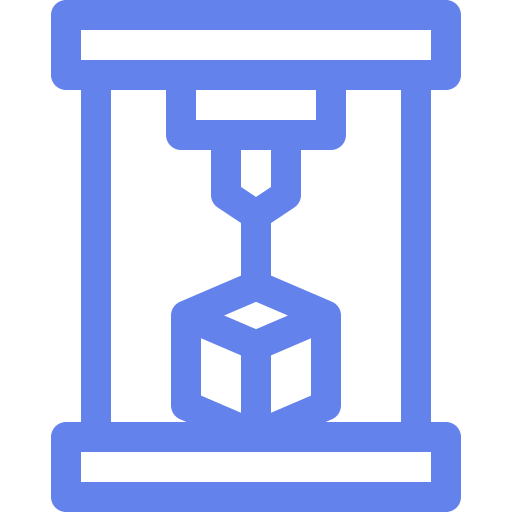Are consumer level 3D printers able to print plastic objects of similar quality to ones produced using injection molding? Or is 3D printing useful mostly for the prototyping stage before a design is finalized and a steel mold is produced for injection molding?
Generally speaking - there aren’t many areas where the finished product using 3d printing is better than more traditional methods. The main advantage of 3d printing is the flexibility. Injection molding will pretty much always give you a better result, but you’ll be able to go from idea to physical prototype much more quickly with 3d printing - not to mention that your average person isn’t going to be able/willing to set up an injection mold in their homes.
In industrial use (so not consumers) the main use for 3d printing is indeed rapid prototyping, 3d printing doesn’t really scale all that well to mass production, but if you’re going to be iterating on a design several times before getting something you’re comfortable with, then it’s a great choice
Removed by mod
Using it for jewelry is pretty good. Better than the injection process
You’re not going to be able to do an FDM print without there being layer lines and without there being a plane in which the part is more fragile thanks to layers being easier to delaminate from each other than to break. A resin printer can more or less avoid these problems, but you’ll need an expensive engineering resin to get the same strength. None of the problems affect everything you might ever want to make, though, and there are plenty of things you might only want one or two of, so obviously would never machine a mould for.
It depends on how you define quality.
- If you define it by general shape and tolerances, 3d printing can(!) achieve a comparable quality.
- if you define it by it’s surface finish, SLA prints can but it’s nearly impossible with FDM (at least currently).
- and if you define it, by its tensile strength or mechanical properties injection molded pieces wil probably always have an edge over 3d prints because of their anisotropic behaviour (meaning the piece can endure forces differently depending on the direction)
And of course as already mentioned injection molding is a much better fit for mass production.
And on the commercial side you have SLS. It can make parts that are accurate like SLA but made out of nylon so they are also really strong - that’s for example how most parts by bondtech are made.
Not quite in the consumer pricepoint yet, but maybe in a few years.
I agree with all your points, except the last one. Admittedly, it is still rare, but there are companies out there that, using industrial machines, manage to get close to or (in case of the linked one) exceed injection moulding in tensile strength, and are achieving near isotropy using FDM processes. https://orion-am.com/blog/orion-am-news-1/3d-printing-peek-stronger-than-injection-molding-12
Disclaimer: I work there. However, this article has independent test data that has been verified by 3 different labs by now.
I guess there’s always something new to learn. But while it’s tested with PEEK (and other high performance thermosplastics) I am curios if it works with more customer-grade materials like PET(G), ASA, PLA or PS, since those have a far lower melting range compared to PEEK. Also most users are probably not willing to pay the price of PEEK or other high performance materials. Nevertheless its a really interesting method i wasn’t aware of yet, maybe it will become the new standard for industrial FDM in a few years. Thanks for sharing!
There’s no data on those, but we did at some point print air tight (0.8 bar over a week iirc, no vapour smoothing) in abs, so it may be similar. Consumer grade hardware of this sort is probably still pretty far away, but it’s not as impossible as many believe :)a
This is very good information.
To add another point, a few other differences: -Additive manufacturing (3d printing) can produce some shapes which are not possible using injection molding -Injection molding currently has access to a wider variety of materials due to its maturity (pelletized raw material)
Additive manufacturing (3d printing) can produce some shapes which are not possible using injection molding
Agree. I was just thinking about this last night. The model I’m currently making would have to be multiple sub-components without 3D printing. Having everything as one piece, but still with a lot of air gaps, makes the finished product stronger.
Injection molding currently has access to a wider variety of materials due to its maturity (pelletized raw material)
There are pellet extruders, but generally agree that there’s a wider material selection available for injection molding.
nearly impossible with FDM
I’m not in the space, but what’s your opinion of acetone vapor treatments to get a bit higher polish for fdm?
I finally have a pretty well tuned ASA and ABS capable printer and am excited to give vapor smoothing a shot. That said, I am very curious how repeatable it will be in terms of part tolerance. Most of my parts are functional. Nicer surfaces would be cool, but not if it results in some variability in tolerance.
I haven’t tried it myself yet but from the results I’ve seen online it seems like a good way to decrease roughness. But you still you have to print with a low layer height since larger layers result in deeper crevices which can’t be mitigated by the vapor. And its nothing I would try without proper safety measures. Of course you can also sand and polish your surfaces by hand but especially larger surfaces get really tedious really quick :D
It’s not the quality that’s a problem, it’s throughput. In the hours it would take to print a part, you could get hundreds of an injection molded part.
They can be, it largely depends on how well calibrated the printer and the print settings are. 3D printing definitely is vastly superior for low quantity production or prototyping (due to the costs of getting molds) but it generally speaking isn’t the best for mass manufacturing.





